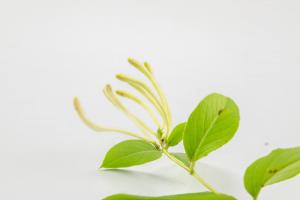What Happens if You Put Air Plant in Chlorine Water?
Air plants, also known as Tillandsia, are popular houseplants known for their unique ability to absorb moisture and nutrients from the air. They are a low-maintenance plant that can be grown without soil and are often used as decorative accents in homes, offices, and other indoor spaces. But what happens if you put air plants in chlorine water? Let's find out.
Chlorine and Air Plants
Chlorine is a strong chemical that is commonly used to sanitize swimming pools and other water sources. When air plants come in contact with chlorine water, the chemical can damage their delicate leaves and cause them to wilt or turn yellow. This is because chlorine can disrupt the natural balance of nutrients in the plant and make it difficult for them to absorb moisture and minerals from the air.
Treating Air Plants Exposed to Chlorine Water
If you accidentally expose your air plants to chlorine water, there are a few steps you can take to help them recover. First, remove the plants from the water immediately and rinse them thoroughly with clean water. You can also soak the plants in a bowl of water for a few hours to help flush out any residual chlorine. Be sure to change the water frequently to ensure the plants are not exposed to any additional chemicals.
After rinsing and soaking, gently shake off any excess water and allow the plants to air dry in a well-lit area. Avoid placing the plants in direct sunlight as this can cause further damage to their leaves. Once the plants are completely dry, you can mist them lightly with water to help restore their moisture balance. It's important to let the plants dry out completely between waterings to prevent any moisture buildup that can lead to rot.
Preventing Exposure to Chlorine Water
The best way to prevent exposure to chlorine water is to avoid placing air plants near sources of chlorine, such as swimming pools, hot tubs, or chlorinated tap water. If you do want to use chlorinated water to water your air plants, be sure to let the water sit out in an open container for at least 24 hours before using it. This will allow the chlorine to evaporate and reduce the risk of damage to the plants.
Alternatively, you can use filtered or distilled water to water your air plants. This will help ensure that your plants are not exposed to any chemicals or minerals that can harm them. It's important to remember that air plants do not need to be watered as frequently as traditional plants and that overwatering can be just as harmful as underwatering.
Conclusion
Air plants are beautiful and unique plants that can add a touch of greenery to any indoor space. While they are low-maintenance, it's important to be mindful of their needs and to avoid exposing them to chlorine water. If you accidentally expose your air plants to chlorine, follow the steps outlined above to help them recover. By taking proper care of your air plants, you can enjoy their beauty and unique characteristics for years to come.

 how many times do yo...
how many times do yo... how many planted tre...
how many planted tre... how many pine trees ...
how many pine trees ... how many pecan trees...
how many pecan trees... how many plants comp...
how many plants comp... how many plants can ...
how many plants can ... how many plants and ...
how many plants and ... how many pepper plan...
how many pepper plan...






























